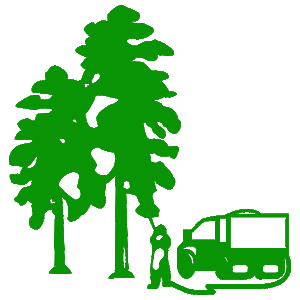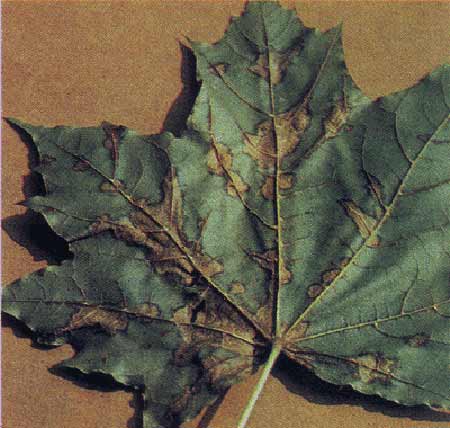Anthracnose (Maple)
Maple anthracnose is a fungal infection which causes areas of brown, dead leaf tissue, similar in appearance to leaf scorch. The fungus overwinters in fallen leaves and in cankers on the twigs. Wind and rain carry fungal spores to young leaves. The fungus then enters the new host leaves, dead spots developing where the fungus enters. The dead spots will continue to grow, eventually decimating the leaf. During rainy season, the fungus can cause defoliation. If the defoliation occurs early in the growing season, the tree will probably refoliate. If the fungus has the opportunity to reinfect the tree for successive years, it can spread to woody material, killing branches.
Maple anthracnose can be distinguished from leaf scorch by the presence of spore producing organisms, resembling ground pepper, on the undersides of leaves.
Once the fungus is established in the growing season, chemical treatment may have minimal effect. Professional pruning will be most beneficial. Infected twigs should be removed below the canker. Fallen leaves should be collected, and all tree waste disposed – by burning, if possible.
The following spring, just after bud break, the infected trees should be sprayed with fungicide available to professional arborists and licensed pesticide applicators. Application should be repeated twice more, at two week intervals.








